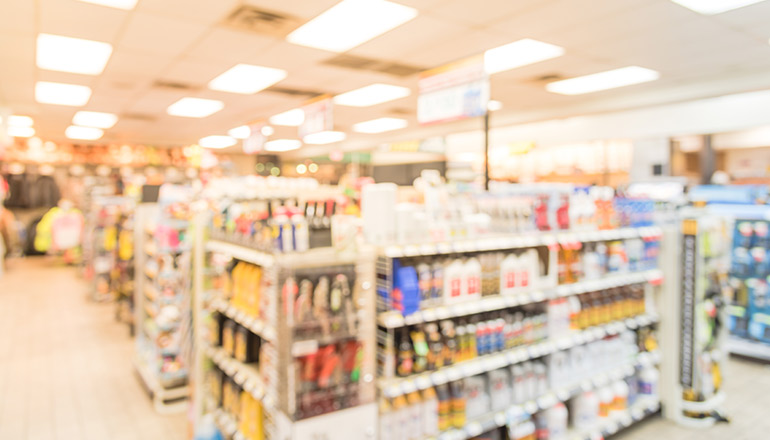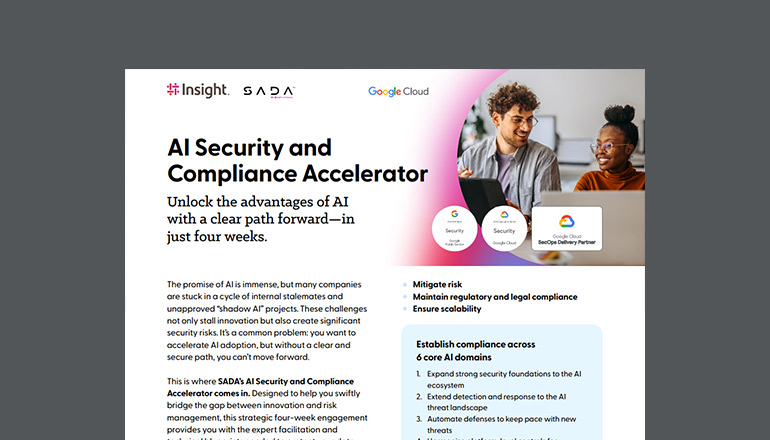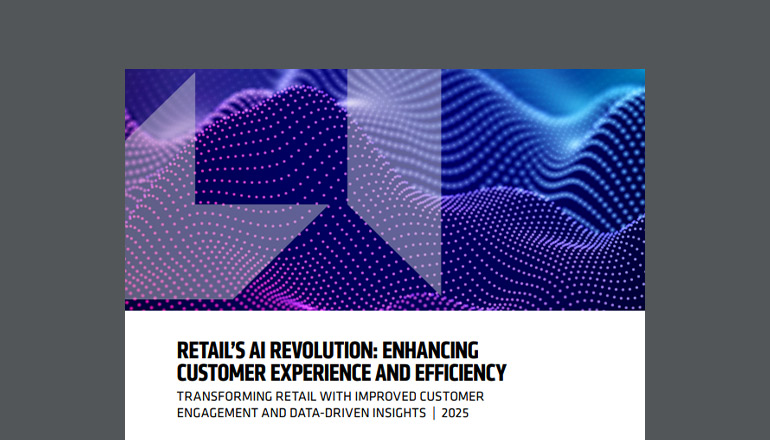Article Taking an Innovative Approach to Merchandising Technology: 4 Retail Trends
Consumer expectations are evolving; and more competition is emerging. How is your business planning to keep up?
By Insight Editor / 7 Mar 2020 / Topics: Artificial Intelligence (AI) Customer experience Intelligent edge

According to the Consumer Expenditure Surveys (CE) annual report, the average annual expenditures of consumers totaled $61,224 in 2018. There’s a lot of opportunity out there, but there’s also a lot of competition. From grocery stores to department stores, there are a range of businesses consumers can choose to engage with.
And shoppers have high expectations when it comes to convenience, near-instant gratification and quality. You may even start to see preferences shift as consumers look beyond pricing alone and take into account the overall experience instead.
As a result, retailers are starting to create customized, efficient shopping journeys by leveraging merchandising technology. These solutions don't just exist in the physical store, but also through the digital tools buyers regularly use. How your company attracts buyers can mean the difference between standing out or becoming irrelevant to these modern shoppers.
Merchandising technology adoption actions to take now:
- Build customer engagement with the aid of interactive bots, mobile apps and a seamless e-commerce experience.
- Personalize both the in-store and online experience by using advanced analytics collected by IoT-enabled devices to deliver targeted offerings.
- Enhance worker collaboration with modern software and apps to improve store productivity and customer service.
- Optimize business operations by automating repetitive tasks, updating outdated infrastructure and leveraging the cloud.
Building customer engagement
Mobile shoppers spend 59% of their time browsing online stores, but only 15% close the sale — why is that?
Some consumers want to try things on or physically touch them before committing to a purchase. This is understandable and not something that needs to be addressed; that same buyer may still convert into an in-person sale. Others, however, may bounce from a page because the website failed to provide relevant information, was difficult to navigate or proved unsecure — all things you can address and improve.
Engaging with online shoppers means having a platform that simplifies the shopping experience. To accommodate increasingly mobile target audiences, companies should make their websites compatible with multiple devices: phones, tablets, desktops, etc. Retailers should also consider building interactive applications that make it easy for buyers to search for items, find related products, get deals, receive loyalty points and complete transactions anytime, anywhere.
Since the shopping journey is 24/7/365, it could also help to have an interactive bot. Chat bots are simply conversational agents powered by Artificial Intelligence (AI) that can help to quickly address basic topics such as store hours, return policies, inventory availability, locations and more.
Millennials in particular prefer using chatbots. In fact, 55% have shared that interacting with a chatbot has changed their perception of a business in a positive manner. These same chatbots can store consumer data to predict future behavior, sending automatic deals and offers to those who show interest in a specific good or pulling up recommended products based on browsing history.
Chatbots can also guide users through secure payment processing for a streamlined e-commerce experience. Today, there are a multitude of payment options to choose from — including Google Pay, Apple Pay, Paypal, Samsung Pay, Amazon Pay and Visa Checkout. With 86% of consumers concerned about their data privacy, having an encrypted platform can bring peace of mind to consumers and improve website engagement.
Personalizing experiences
Offers tailored to your customers wants and needs can help improve relevancy and brand reputation. Take the guesswork out of creating memorable experiences and deliver a strong digital presence by leaning on the trifecta of the Internet of Things (IoT), data analytics and AI.
The IoT is expected to exceed $30 billion by 2024 in the retail space as it pairs well with mobile devices and smart sensors to improve data collection. As mentioned above, AI is also a highly sought solution that can be used as part of conversational commerce to gather consumer information.
When combined, the IoT and AI deliver incredible insight that can help businesses better understand buying behavior, reduce costs and customize offerings. Some examples include:
- Smart, digital signage for advertising and marketing
- RFID tracking for better inventory control
- Interactive kiosks for faster checkout
- Targeted email, text or app promotions based on historic data
The possibilities are endless, and the impact is real. These tools can also help your business uncover gaps in your offerings: Are you selling the right products based on demand? Are you pricing them at an acceptable level? Are external trends impacting your outcomes?
By addressing these questions, you’ll be able to provide greater value to your consumers.
Enhancing workplace collaboration
How your workers communicate with each other and your customers will directly impact your business’s success. Consider the following stats about the importance of consumer experience, according to PWC:
- 86% of buyers are willing to pay more for a great customer experience.
- 49% of buyers are more likely to make an impulse purchase after receiving a positive, personalized experience with a company.
- 32% of consumers will walk away from a brand they love after just one bad experience.
- 70% of consumers value speed, convenience, helpful employees and friendly service the most.
- 82% of shoppers want more valuable interactions with employees when shopping.
That’s a lot to consider. So, what can you do to meet these needs? You can start by ensuring your employees have the tools and training needed to deliver exceptional experiences. This means investing in up-to-date hardware and software that empower workers to seamlessly do their jobs.
Benefits: Your team will be able to easily access information about pricing, inventory, pickups, etc. — and instantly communicate with one another.
Results: Faster turnaround time for improved customer satisfaction, enhanced knowledge-sharing and productivity, the ability to relocate talent as needed during peak hours, visibility into urgent situations and scheduling, less stressed workers and more.
Optimizing processes for POS-itive outcomes
Taking inventory can be time consuming and complicated — especially for retailer with multiple locations or heavily seasonal products. While some shops still use traditional registers, many have adopted Point-of-Sale (POS) systems to help them monitor transactions, and accurately track, store and manage business data.
With a POS system, you get instant inventory updates when you scan customers’ products. The ability to centralize data and run reports also provides insight into future company investments. Year-over-year comparisons indicate customer trends — so you can keep track of stock and make more informed decisions about order placements to avoid surplus or shortage.
Cloud-based POS systems are especially beneficial to growing businesses that are inherently mobile or unable to house vast amounts of data on-site. Through a provider, all of your data can be stored and encrypted at an off-site location, available for instant access at a moment’s notice and safe from physical disasters.
To improve business practices, retailers can also look beyond checkout and invest in solutions that may increase automation. According to McKinsey, automatable activities account for approximately 30–40% of the time merchants spend on planning activity. Advanced planning systems coupled with predictive analytics provide the opportunity to automate tasks from warehousing to scheduling.







